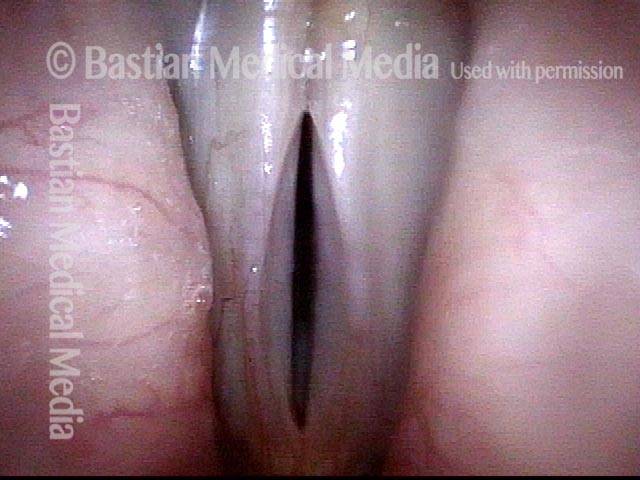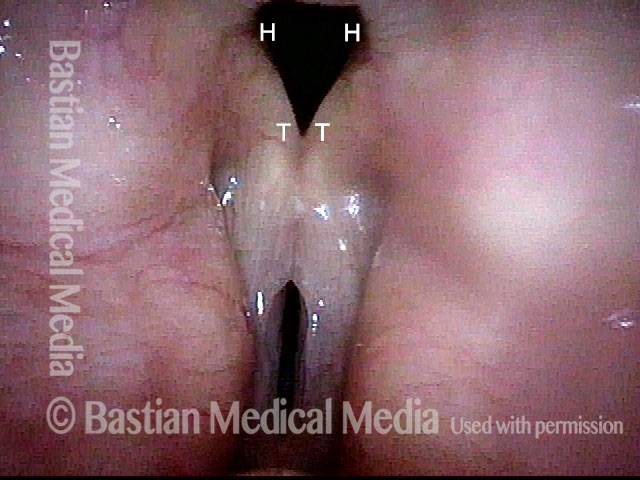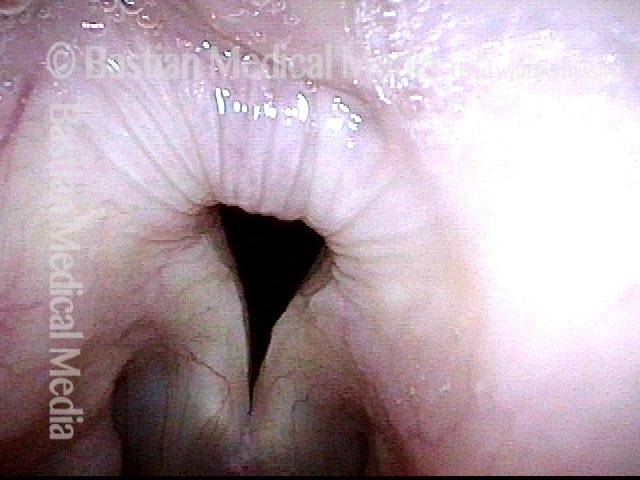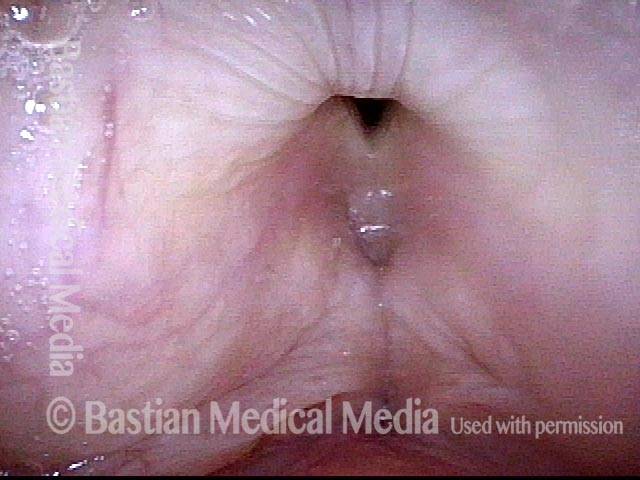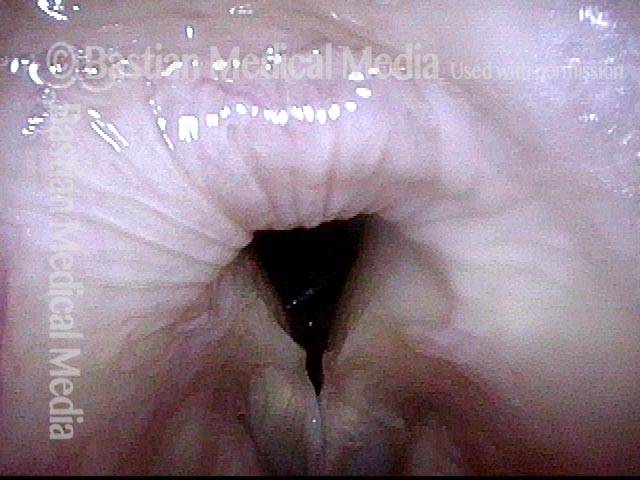Breathy dysphonia is a kind of hoarseness caused by “wasting” of air through the glottis (vocal cord level). Also called air-wasting dysphonia. The voice may also be described as whispery, foggy, or fuzzy.
See also: Breathy-pressed phonation; dysphonia; vocal fry dysphonia; spasmodic dysphonia; muscular tension dysphonia (MTD)
IA-only Paresis
IA-only paresis (1 of 5)
This patient describes his voice as being extremely weak with an abrupt onset that was unrelated to intubation or any other injury. The patient's voice sounds extremely breathy regardless of vocal task. The amount of bowing seen here cannot fully explain the breathy (air-wasting) dysphonia that is heard.
IA-only paresis (1 of 5)
This patient describes his voice as being extremely weak with an abrupt onset that was unrelated to intubation or any other injury. The patient's voice sounds extremely breathy regardless of vocal task. The amount of bowing seen here cannot fully explain the breathy (air-wasting) dysphonia that is heard.
IA-only paresis (2 of 5)
An intense visualization of the posterior commissure begins to reveal the mystery. While the "toes" (indicated by each letter T), or vocal processes of the arytenoids, come into full contact, the "heels" (indicated by each letter H), or bodies of the arytenoid cartilages, do not.
IA-only paresis (2 of 5)
An intense visualization of the posterior commissure begins to reveal the mystery. While the "toes" (indicated by each letter T), or vocal processes of the arytenoids, come into full contact, the "heels" (indicated by each letter H), or bodies of the arytenoid cartilages, do not.
IA-only paresis (3 of 5)
An even closer view shows the persistent posterior commissure gap.
IA-only paresis (3 of 5)
An even closer view shows the persistent posterior commissure gap.
IA-only paresis, during a cough (4 of 5)
The elicited cough shown in this image proves that the patient is physically unable to close the posterior commissure.
IA-only paresis, during a cough (4 of 5)
The elicited cough shown in this image proves that the patient is physically unable to close the posterior commissure.
IA-only paresis, during a Valsalva maneuver (5 of 5)
An elicited Valsalva maneuver, which also fails to close the posterior commissure. High-resolution CT was performed to prove there was no abnormality of the cricoid or arytenoids which might account for this finding of apparent interarytenoid paresis or avulsion.
IA-only paresis, during a Valsalva maneuver (5 of 5)
An elicited Valsalva maneuver, which also fails to close the posterior commissure. High-resolution CT was performed to prove there was no abnormality of the cricoid or arytenoids which might account for this finding of apparent interarytenoid paresis or avulsion.
